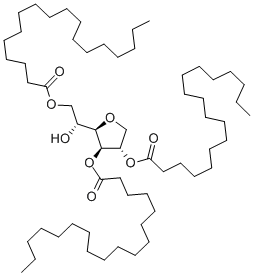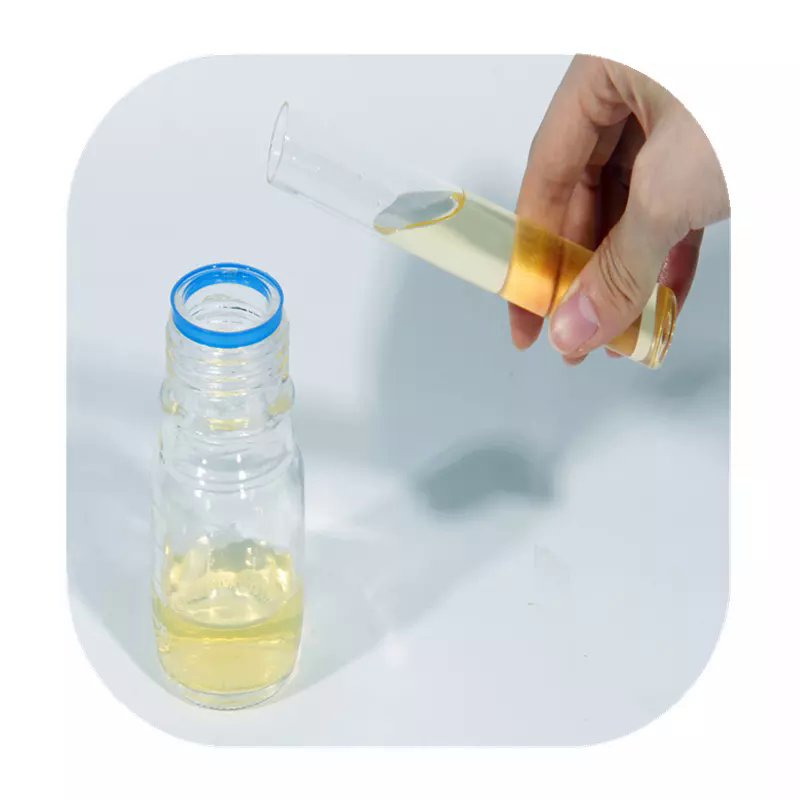Sorbitan sesquioleate
Synonym(s):Arlacel 83;Span 83
- CAS NO.:8007-43-0
- Empirical Formula: C66H126O16
- Molecular Weight: 1175.7
- MDL number: MFCD00151568
- EINECS: 232-360-1
- SAFETY DATA SHEET (SDS)
- Update Date: 2024-12-18 14:07:02

What is Sorbitan sesquioleate ?
Chemical properties
Pale yellow or slightly brownish-yellow paste, which becomes a viscous, oily, brownish-yellow liquid at about 25 °C.
The Uses of Sorbitan sesquioleate
sorbitan sesquioleate is a surfactant used as an emulsifying agent.
The Uses of Sorbitan sesquioleate
Lonzest(R) SOC is a low HLB, w/o emulsifier suggested for use in cosmetic formulations and household products. Also used in emulsifying explosives.
The Uses of Sorbitan sesquioleate
Sorbitan sesquioleate is used as an emulsifier in cosmetic and pharmaceutical ointments and creams.
What are the applications of Application
Sorbitan sesquioleate is a nonionic surfactant
Definition
Sorbitan sesquioleate (SSO) is a water-in-oil emulsifier that allows oil and water to blend into a homogeneous mixture that does not separate. It is widely used in cosmetics such as moisturizers, cleansers, conditioners, eye makeup removers, exfoliating products, sunscreens, and baby products. Closely related emulsifiers such as Span 20 (sorbitan monolaurate), Span 40 (sorbitan monopalmitate), span 60 (sorbitan monostearate), span 65 (sorbitan tristearate), span 80 (sorbitan monooleate), and Span 85 (sorbitan trioleate) can cross-react with SSO. They, therefore, should be avoided in patients sensitive to SSO.
brand name
Arlacel 83 (ICI Americas); Arlacel C (ICI Americas).
Flammability and Explosibility
Non flammable
Contact allergens
Sorbitan sesquioleate is a mixture of mono and diesters of oleic acid and extol anhydrides derived from sorbitol. It is used as a surfactant and an emulsifier in cosmetics. It acts sometimes as a contact allergen, particularly in leg ulcer patients. It is also responsible for false-positive patch test reactions to haptens, with which some allergen providers emulgated, such as parabens mix, fragrance mix, Amerchol L101, and ethylene-urea /melamine formaldehyde.
Safety
Sorbitan Sesquioleate is considered a low hazard ingredient by the Cosmetics Database, which only notes mild concerns regarding organ system and toxicity, due to animal studies that showed organ effects and skin moderation at moderate doses.
Properties of Sorbitan sesquioleate
| Density | 0.989 g/mL at 25 °C(lit.) |
| vapor pressure | 0.81 psi ( 20 °C) |
| refractive index | n |
| Flash point: | 113 °C |
| solubility | Dispersible in water, soluble in fatty oils, slightly soluble in ethanol. |
| form | Viscous Liquid |
| pka | 13.11[at 20 ℃] |
| color | Pale Yellow |
| Water Solubility | Insoluble in cold water, hot water. soluble in mineral oil and ethyl acetate. |
| EPA Substance Registry System | Sorbitan sesquioleate (8007-43-0) |
Safety information for Sorbitan sesquioleate
| Pictogram(s) |
 Exclamation Mark Irritant GHS07 |
| GHS Hazard Statements |
H315:Skin corrosion/irritation H319:Serious eye damage/eye irritation |
| Precautionary Statement Codes |
P264:Wash hands thoroughly after handling. P264:Wash skin thouroughly after handling. P321:Specific treatment (see … on this label). P305+P351+P338:IF IN EYES: Rinse cautiously with water for several minutes. Remove contact lenses, if present and easy to do. Continuerinsing. P332+P313:IF SKIN irritation occurs: Get medical advice/attention. P337+P313:IF eye irritation persists: Get medical advice/attention. |
Computed Descriptors for Sorbitan sesquioleate
| InChIKey | SPFRYHCSFBFNTR-RKGWDQTMSA-N |
Sorbitan sesquioleate manufacturer
HRV Global Life Sciences
Mohini Organics Pvt Ltd
Jeevika Yugchem Pvt Ltd
New Products
(S)-3-Aminobutanenitrile hydrochloride 4-Methylphenylacetic acid N-Boc-D-alaninol N-BOC-D/L-ALANINOL Tert-butyl bis(2-chloroethyl)carbamate 3-Morpholino-1-(4-nitrophenyl)-5,6-dihydropyridin- 2(1H)-one Furan-2,5-Dicarboxylic Acid Tropic acid 1-Bromo-3,5-Di-Tert-Butylbenzene S-2-CHLORO PROPIONIC ACID ETHYL ISOCYANOACETATE 2-Bromo-1,3-Bis(Dimethylamino)Trimethinium Hexafluorophosphate 4-IODO BENZOIC ACID 3-NITRO-2-METHYL ANILINE 1-(2,4-DICHLOROPHENYL) ETHANAMINE (2-Hydroxyphenyl)acetonitrile 4-Bromopyrazole 2-(Cyanocyclohexyl)acetic acid 4-methoxy-3,5-dinitropyridine 1-(4-(aminomethyl)benzyl)urea hydrochloride 2-aminopropyl benzoate hydrochloride diethyl 2-(2-((tertbutoxycarbonyl)amino) ethyl)malonate tert-butyl 4- (ureidomethyl)benzylcarbamate Ethyl-2-chloro((4-methoxyphenyl)hydrazono)acetateRelated products of tetrahydrofuran








You may like
-
 8007-43-0 Sorbitan sesquioleate 99%View Details
8007-43-0 Sorbitan sesquioleate 99%View Details
8007-43-0 -
 8007-43-0 98%View Details
8007-43-0 98%View Details
8007-43-0 -
 Sorbitan sesquioleate CAS 8007-43-0View Details
Sorbitan sesquioleate CAS 8007-43-0View Details
8007-43-0 -
 Span 83 (=Sorbitan Sesquioleate) CAS 8007-43-0View Details
Span 83 (=Sorbitan Sesquioleate) CAS 8007-43-0View Details
8007-43-0 -
 Sorbitan sesquioleate 99%View Details
Sorbitan sesquioleate 99%View Details
8007-43-0 -
 Sorbitan sesquioleate 8007-43-0 99%View Details
Sorbitan sesquioleate 8007-43-0 99%View Details
8007-43-0 -
 Sorbitan sesquioleate, nonionic surfactant CAS 8007-43-0View Details
Sorbitan sesquioleate, nonionic surfactant CAS 8007-43-0View Details
8007-43-0 -
 Sorbitan sesquioleate CAS 8007-43-0View Details
Sorbitan sesquioleate CAS 8007-43-0View Details
8007-43-0